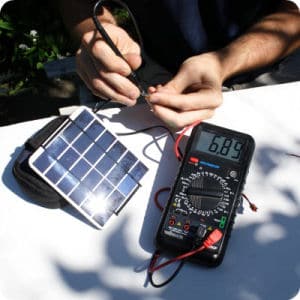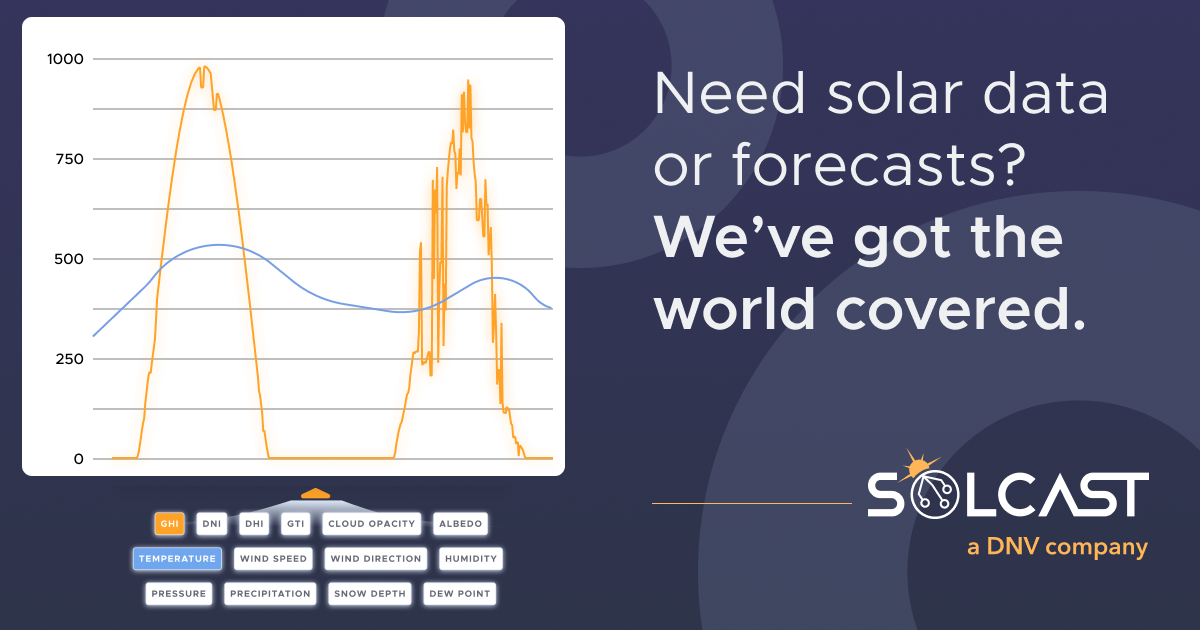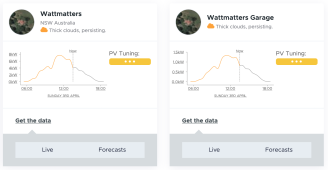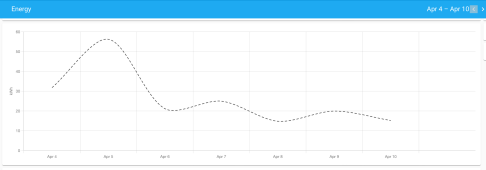I've wondered the same thing. Did I install too big of a solar panel array? For example, say I consume 2000 watts daily. But my array is a 10,000 watt array (capacity to produce that much). Sure, I could store a lot in a battery bank, but for argument sake or point of this question, lets assume my batteries are topped off at 100% SOC. The 10,000 watt array is not being used to its potential, right? Now, that's 10,000 watts based on the size of the panels (say they are 300watts each panel x number of panels = 10,000 watts, that's rated power). But, the sun , weather, clouds, my panels aren't able to make what the sticker on the back says they can make. So, I think I would need a sun irradiance sensor or meter installed somewhere out on my ground mount rack, near my panels, at top, middle. That sensor would report real-time what amount of sun is coming in, and based on size of panels what they would produce based on the amount of sun that's coming in at the moment (real time, updated every 1 second maybe). So, the sensor tells me what amount of power I SHOULD be able to make at the moment, which is not the amount of power I am using. The amount I am using is my load at the moment, it fluctuates of course, someone runs a light, a hairdryer, toaster, and the load changes all day long throughout the entire day. If I knew from the sun sensor mounted out at my solar panel array what my array COULD be making max at the moment, minus my current usage (load), then that difference would be what capability or power I have there that I could be using , but am not.
Does this make sense? I don't net meter (sell to grid). I am grid connected, but I like to use grid as last resort when my system cannot produce enough sun power to meet my demand. But it'd be nice to know, and report say over time, day, week, month, year of how much power I kind of let slip by me (without using it, or storing it in a battery). This data I think would be helpful. I would know if my array is over-sized, under-sized, and I would know if buying more batteries was a good idea or not, and I would also know how much extra unused capacity I have in my solar panel array to either buy another inverter (if the existing inverter is maxed out), or buy a water heater tank and pre-heat water so my tankless gas water heater doesn't have to work so hard (and use less gas in the process).
The only current (no pun intended) way for me to figure out if I have excess/unused power/capacity in my system is using math and some reports from PowerView which would tell me how much I'm using, how much load I am covering (or not), and knowing the size of my solar panel array and what it CAN make on a good day, and kind of make an inference as to what my system is doing and is capable of, but its not all that accurate because its theoretical based on wattage ratings of the panels, the estimate of sun hours for my zip code, and is not a number based on real-time data that a sensor would provide. The idea above with a sensor though would be almost real-time, almost down to the watt in showing me what I'm making, what I'm using, and what capacity is there based on my solar panel size (wattage) and the amount of sun is coming in. It takes a solar panel + sunshine to make power, and that known power is real time, its for the moment (the moment the sun is shining and no clouds, etc). Using a sensor to send that back to the inverter and the inverters firmware can take that number (the available capacity) and do the math to minus out what's being currently used, to show available array capacity would be I think a good number to know and be able to report. I don't think anything like this currently exists. I think its probably done during the design phase of taking the size of your solar panel array, and figuring your known loads that you want to cover, and building a system to meet the demand of known loads and once that's met, the people that sell and install equipment know they have hit the goal post and stop there. There's probably a ton of solar systems installed daily that are over-sized , yet they meet the designed load, and the owner is happy the system works as it should, never knowing that one or more parts of their system is slightly or maybe even grossly over-sized. If under-sized, they'd know it sooner or later, dead batteries, unpowered loads, equipment failing to start, etc. But over-sized, they may not live long enough to discover their system was and is over-sized. Please correct me I am wrong. I'm not an expert in solar, just a newbie with a lot of ideas and thoughts and not sure if some are valid or not but feel open forums like this are great for inducing thought and maybe even figuring a few things out.
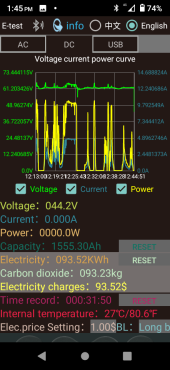 .
. .
.


